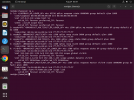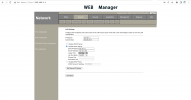Your router config looks good for me. For the test let the FreeBSD to acquire it's IP address via DHCP (for re0 or if you prefer to have ip address on the bridge itself then re0bridge1 BUT not both) and then test if you have ping to your router at 192.168.1.1 and then to your provider gateway at 100.108.0.1
I don't see any reason to have the IP address on the bridge unless you are using routing/forwarding between the bhyve guest VM and the FreeBSD host. When you have bridge between your LAN interface re0 and your bhyve TAP interface then VM is connected on L2 to your broadband router and it will have direct access to it and also can obtain the IP address via DHCP from it. It's not needed to put IP address on your bridge interface in this case.
If you don't bridge your LAN interface with your bhyve TAP interface and if you want your bhyve guest to have access to your network via routing/forwarding then you need to have IP address on the bridge itself which will act as default gateway address for your bhyve guest VM. But then you will need to enable forwarding and use NAT.
So if you don't want to filter/restrict your bhyve VM and let it access the entire local network it's easy to use bridge between your LAN interface re0 and the TAP interface.
I had connectivity on both the base Ubuntu machine and in the vm inside, with static IP addresses; I could ssh from the freebsd VM to the ubuntu vm, but all this was short lived.
There was some recurrent trouble when stopping and restarting the ubuntu's vm, which had to routinely dealt with by a series of virsh, brctl and libvirtd commands. Between all this troubleshooting newer problems arose, such as that of the bridge not detected or not working. An easier option is to start afresh with a new installation of the base machine, as some of the network issues relate to the installation without networking, which was set right post-install. (Someone taught me how to set up a linux vm with kimchi, I hadn't taken this familiar route and followed instructions online and had created the ubuntu VM running inside a Ubuntu that innovated network code to feature yaml that counted blank spaces ! )
On both native machines I created ufw rules to allow communication between the VMs, but not quite sure how it reflects on ip tables, because I saw an UFW error in journalctl, which seemed related to rules that I did not create.
All I need to do is the get one machine to ping another machine a feet away, and send a one line message that I need to read in the other machine, but these are the challenges:
1. The physical network interface is mapped to a virtual bridge with a default name as br0 or bridge0, which is changed by libvirtd as virbr0 in ubuntu or assigned a bridge name such as re0bridge1 in freebsd, which in turn has to be interfaced with a virtual interface of the VMs which have different names. Something goes wrong in the process. I need to fix this.
2. The firewall rules have to be just right to allow communication between the VMs, and the IP tables have be right.
These are tasks very ordinary for network experts, due to my non-technical background combined with a non-linear learning path, and due to some inherent issues with the network not really being a network even of a minimal number of computers, this is taking hours after hours everyday for a whole week, not yet resolved. Please guide me on this. Thank you.





